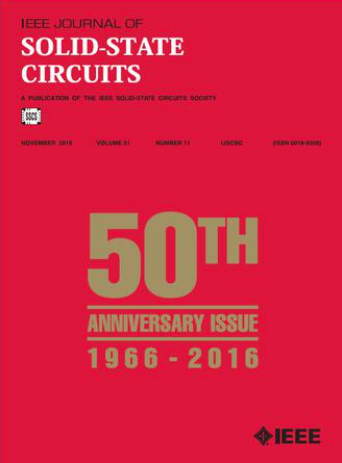USB双向供电稳压电缆
IF 5.6
1区 工程技术
Q1 ENGINEERING, ELECTRICAL & ELECTRONIC
引用次数: 0
摘要
快速充电技术的发展大大缩短了设备的充电时间。然而,随着功率水平的提高,热和尺寸问题成为快速充电的限制因素,特别是对于紧凑型设备。本文介绍了一种将充电IC和所有相关无源元件集成到USB电缆连接器中的调压电缆的概念。通过将电源转换器及其相关热量从设备转移到电缆,这种设计大大减小了设备尺寸,并为过热问题提供了另一种解决方案。VRC可以调节两种典型应用场景的双向降压:适配器到设备(A2D)和设备到设备(D2D)场景。此外,还提出了对称的VRC结构,以方便可逆和用户友好的连接。设计的VRC原型采用180纳米高压BCD工艺制造,占地面积为4.7 × 2.9美元mm2,包括所有无源元件。在A2D场景下传输最大功率为42w时,峰值功率密度为3.17 W/mm2;在D2D场景下传输最大功率为18w时,峰值功率密度为1.36 W/mm2。本文章由计算机程序翻译,如有差异,请以英文原文为准。
A Bidirectional USB Power Delivery Voltage-Regulating Cable
The development of fast charging technology has significantly reduced the charging time for devices. However, with the increase of power level, the thermal and size issues become the limiting factors for fast charging, especially for compact devices. This article presents the concept of the voltage-regulating cable (VRC) which integrates the charging IC and all the associated passive components into the universal serial bus (USB) cable connector. By relocating the power converter and its associated heat from the devices to the cable, this design significantly reduces the device size and provides an alternative solution for the overheating issues. The VRC can regulate a bidirectional step-down voltage for two kinds of typical application scenarios: adapter-to-device (A2D) and device-to-device (D2D) scenarios. In addition, a symmetrical VRC structure is also proposed to facilitate a reversible and user-friendly connection. The designed VRC prototype, fabricated in 180-nm high-voltage BCD process, occupies an area of $4.7\times 2.9$ mm2, including all passive components. It achieves a peak power density of 3.17 W/mm2 when transferring the maximum power of 42 W in the A2D scenario and a peak power density of 1.36 W/mm2 with a maximum power of 18 W in the D2D scenario.
求助全文
通过发布文献求助,成功后即可免费获取论文全文。
去求助
来源期刊

IEEE Journal of Solid-state Circuits
工程技术-工程:电子与电气
CiteScore
11.00
自引率
20.40%
发文量
351
审稿时长
3-6 weeks
期刊介绍:
The IEEE Journal of Solid-State Circuits publishes papers each month in the broad area of solid-state circuits with particular emphasis on transistor-level design of integrated circuits. It also provides coverage of topics such as circuits modeling, technology, systems design, layout, and testing that relate directly to IC design. Integrated circuits and VLSI are of principal interest; material related to discrete circuit design is seldom published. Experimental verification is strongly encouraged.
 求助内容:
求助内容: 应助结果提醒方式:
应助结果提醒方式:


